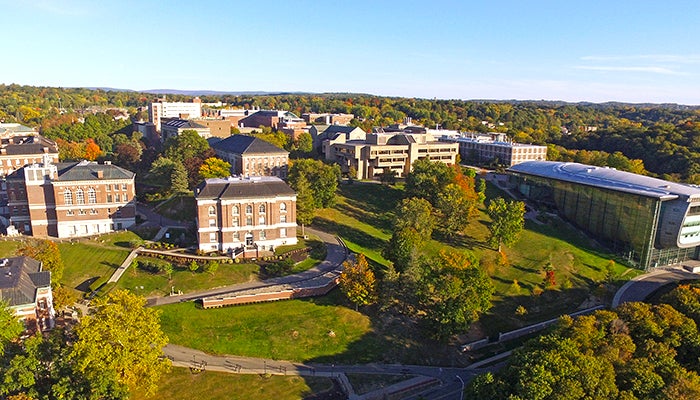On Friday, October 13, President Shirley Ann Jackson will host alumni, alumnae, and guests at the launch of a capital campaign designed to position Rensselaer for its third century of leadership in research and education. The capital campaign will enable Rensselaer to continue preparing students to address the vital issues of today and the emerging needs of tomorrow. The launch event is by invitation only.
The campaign has three main pillars:
To Bridge the Gap that exists between students’ needs and available financial aid resources. For nearly 200 years, Rensselaer has offered a hands-on, research-intensive, and immersive form of learning, which has readied students to change the world. The cost of such an education, however, has risen dramatically, exceeding the ability of students of modest means to pay for it, as well as the Institute’s ability to offer sufficient financial aid.
Overall, the financial need of 43 percent of undergraduates exceeds the financial aid Rensselaer is able to offer them. The proportion of students whose financial need is not equaled by financial aid is even higher for those who are underrepresented minorities.
The gap between the financial aid offered and students’ needs is over $32 million each year. A major focus of the campaign will be building a student aid endowment that will allow Rensselaer to bridge this gap.
To Realize the Faculty 500, which will enable the Institute to attract and retain talented professors whose research and teaching will empower Rensselaer graduates to change the world.
Since 1999, the Institute has hired over 360 tenure and tenure-track faculty, across all five schools. Among these hires have been individual “star” faculty who anchor research “constellations”—multidisciplinary teams of senior and junior faculty, graduate students, and undergraduates. By adding this focus to the research enterprise, sponsored research expenditures have tripled to approximately $100 million annually.
Yet, to continue to grow and to lead in emerging disciplines of great global import, and to offer a superb education in these emerging disciplines to both undergraduate and graduate students, the goal of the second pillar of the campaign is build the tenured and tenure-track faculty size to 500, expanding the associated graduate education, and growing sponsored research expenditures to $250 million annually. The campaign will add resources to create more endowed faculty chairs, to recognize the most talented teachers and researchers, and to attract leading scientists, engineers, artists, scholars, and architects from across the nation and from around the world.
To Build the Third-Century Campus by modernizing the academic, research, and student life facilities that enable Rensselaer to transform students into the next generation of resilient and inspired leaders.
The previous capital campaign allowed the Institute to renovate existing facilities, to improve student life with the East Campus Athletic Village, and to build new platforms for multidisciplinary research—including the Curtis R. Priem Experimental Media and Performing Arts Center, the Center for Computational Innovations, and the Center for Biotechnology and Interdisciplinary Studies. The campaign also enabled the renovation, repurposing, updating, and refurbishing of much of the physical plant, while vastly expanding and upgrading systems and technological infrastructure.
However, the transformation of the Troy campus is not yet complete. To ensure leadership into Rensselaer’s third century, there is a need to bring together Rensselaer scientists, currently spread across the campus, into a state-of-the-art Center for Science with advanced laboratory, research, and teaching spaces. Facilities for the School of Engineering and the other schools also must be expanded and updated.
The capital campaign also will enable the completion of the second phase of the East Campus Athletic Village (ECAV), to support both athletic competition as well as a healthy living and learning balance for all students. This proposed expansion will include an indoor Olympic-quality swimming pool, tennis courts, practice and playing fields for field hockey and lacrosse, and an indoor field house for track and field. These professional-quality facilities will allow Rensselaer to host regional, national, and international athletic tournaments.



